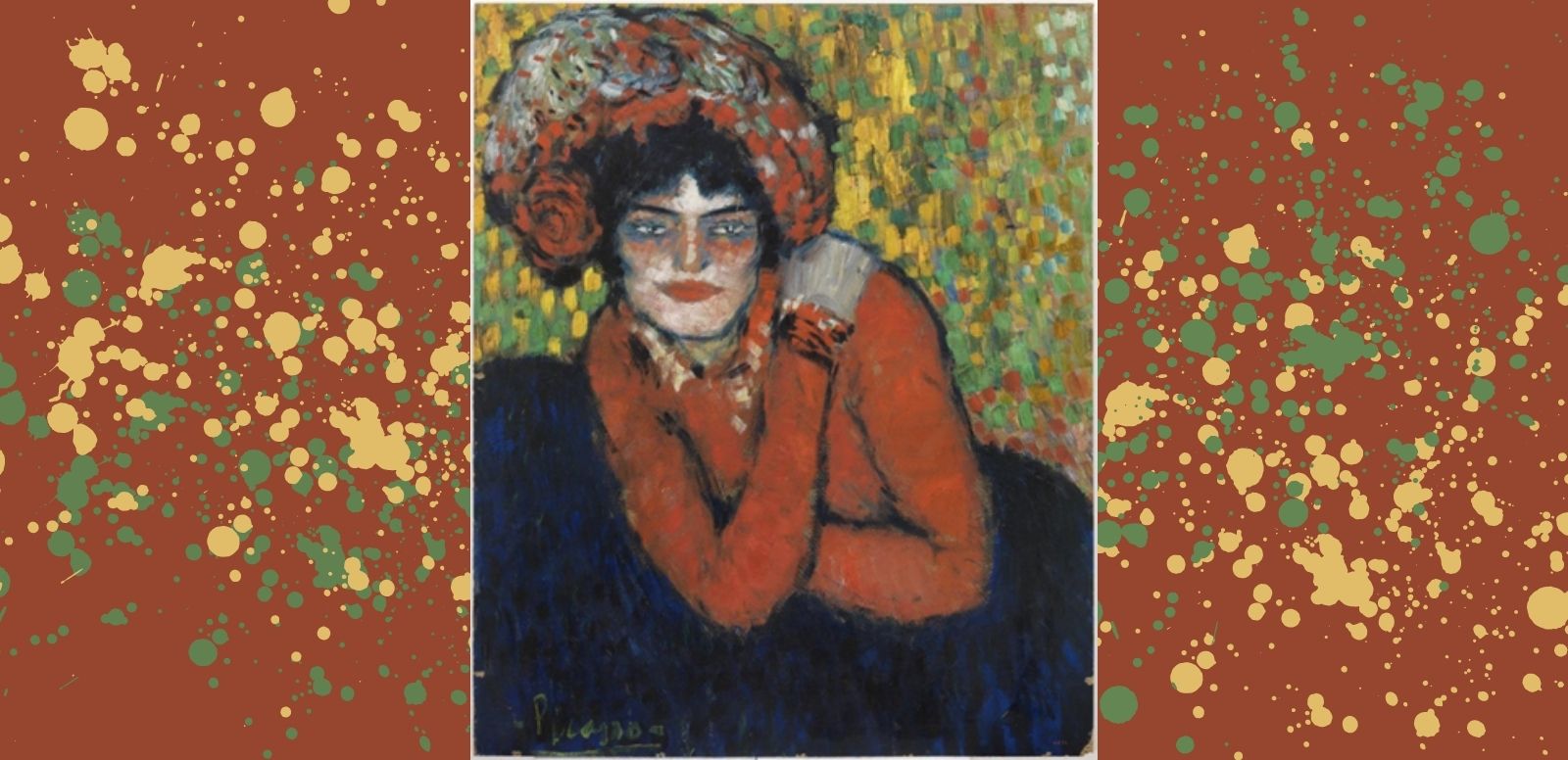
Museu Picasso Barcelona
© Sucesión Picasso, VEGAP, Madrid, 2023
In the work, The Waiting (Margot), Picasso presents a mysterious figure, whose identity is unknown. It is speculated that Picasso saw her in a Parisian café and, although she aroused no particular interest in him, he decided to portray her.
Executed in 1901, The Waiting (Margot) reflects Picasso's period of growing recognition as an artist. During this time, Picasso experimented with different styles and techniques, and this particular work shows the influence of artists such as Toulouse-Lautrec and Van Gogh.
However, Picasso adds his own distinctive touch. In this painting he combines thick, broken brushstrokes with uniform surfaces delimited by dark strokes. The dynamic use of short, thick brushstrokes, sometimes outlined in black, resembles those of Van Gogh's compositions. Thanks to these techniques, Picasso created a contrast of colors, with red dominating the composition, which allows both the figure and the background to stand out.
The Waiting (Margot) was part of a joint exhibition at Ambroise Vollard's gallery in 1901, where Picasso presented sixty-four paintings and some drawings inspired by Parisian life. Although the exhibition was relatively successful, about half of the works were sold.
Over time, the name of this work has been the subject of debate and change. Initially it was called The Morphinomaniac and later, Pierreuse, la main sur l'épaule, in reference to the prostitutes who worked in the street. Picasso's most recent publications have restored the original name, The Waiting (Margot).
Sources:
Blog Museu Picasso Barcelona: https://www.blogmuseupicassobcn.org/2014/04/quien-era-la-enigmatica-margot/?lang=es
Museu Picasso Barcelona: https://museupicassobcn.cat/es/coleccion/obra-de-arte/la-espera-margot

